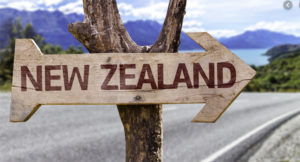Immigration a focus for NZ government policy
New Zealand is emerging as leading destination for migrants.
Migration added a net 56,000 people to New Zealand’s population in the year to June, according to official statistics.
This translates to a population increase of about 11 people for every 1000 New Zealanders. The ratio is slightly down from a peak of 13.8 per 1000 in 2016 but still placed New Zealand ahead of many other countries.
 In the United States, the net migration rate was three per 1000 people in 2018. Germany was 4.8, Britain 3.5 and Australia 9.5.
In the United States, the net migration rate was three per 1000 people in 2018. Germany was 4.8, Britain 3.5 and Australia 9.5.
In the year ended April 2019, annual net migration was provisionally estimated at 55,700 compared with 49,600 in the previous year.
“Annual net migration has ranged between 48,000 and 64,000 since 2015, and remains at historically high levels,” said Stats NZ spokesman Tehseen Islam said.
“Migrant arrivals are higher than when net migration peaked at almost 64,000 in the year ended July 2016,” he said.
Migrant departures were 92,200, up 1400 from the previous year.
“Countries like New Zealand and Ireland tend to have larger swings in net migration rates because they have small populations. In contrast, countries with larger populations tend to have low net migration rates and smaller swings in net migration rate,” Mr Islam said.
Part of the intake were six hundred foreign nurses recruited to work in aged care in New Zealand over the past two years.
Migrant arrivals and departures include the flows of New Zealand citizens, as well as the flows of non-New Zealand citizens, as both affect the population living in New Zealand.
But the recent dip in migrant numbers is causing jitters among economic forecasters.
ASB Bank economist Mike Jones said the numbers were higher than the bank, and Reserve Bank, had been expecting.
“The net migration ‘second wind’ has now been running for 14 months,” Mr Jones said.
“Our assumption is that net immigration will continue to trend lower over the next few years, a view the Reserve Bank broadly shares. Indeed, falling permanent and long-term migration is a key factor restraining consumer spending, house price inflation, and labour supply in the Reserve Bank’s outlook. So the prospect of migration continuing to hold up is a clear risk to this outlook,” he said.
Meanwhile a spat between Labour and New Zealand First coalition ministers has broken out over immigration.
Prime Minister Jacinda Ardern has announced that Immigration New Zealand will exempt arranged marriages for partnership visas where couples cannot fulfil the test of having lived together for 12 months.
Labour needs New Zealand First to agree to make the changes.
But she has struggled to find consensus with New Zealand First leader Winston Peters who has says the current law – including the living together test – is how he believes it should be.
The hard line policy, has had a particular impact on New Zealand’s Indian community because of the practice of arranged marriages. It has led to protests and some Indian New Zealanders resigning from their long-time Labour Party memberships.












